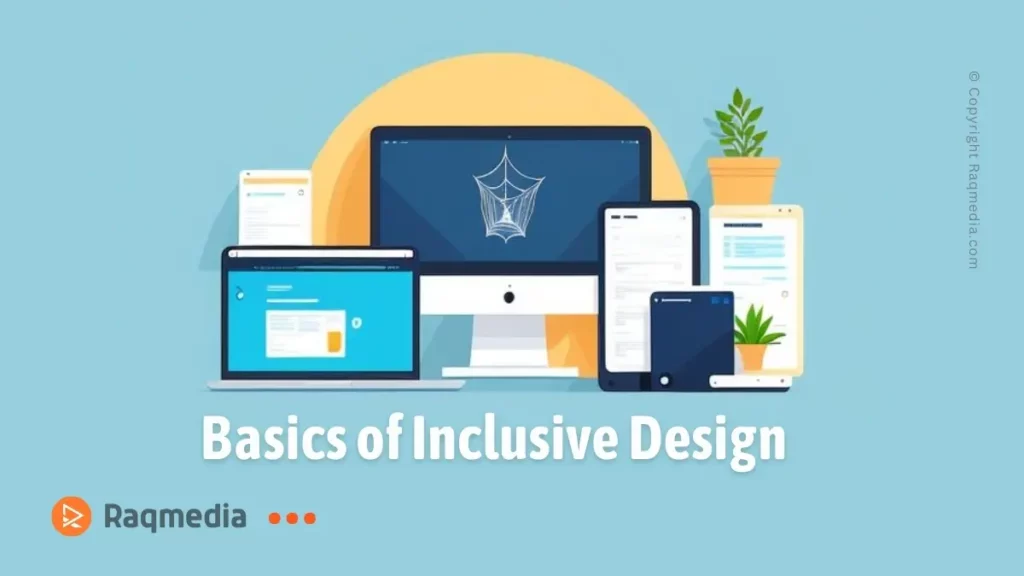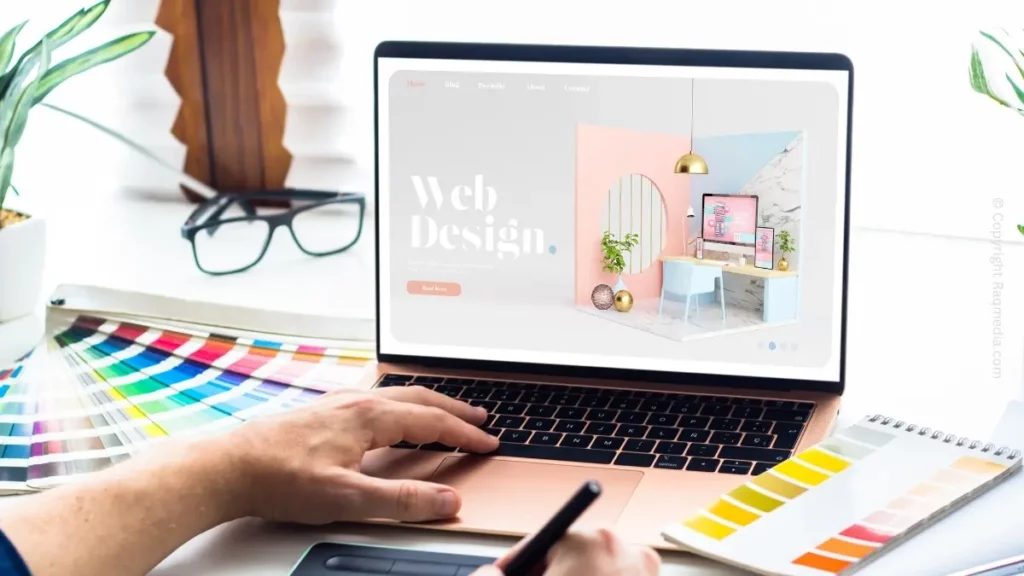Have you ever struggled with a door that was impossible to open, or felt frustrated by a website that seemed designed for everyone but you? If so, you’ve experienced firsthand the consequences of design that isn’t inclusive. Inclusive design is all about creating products and environments that can be used by as many people as possible, regardless of their abilities or limitations. From physical spaces to digital interfaces, the principles of inclusive design are shaping the way we interact with the world around us. So, what is inclusive design and why does it matter? Let’s dive in and explore all you need to know about this fascinating approach to innovation and accessibility.
What is Inclusive Design?
Understanding the Basics of Inclusive Design

Inclusive design is an innovative design approach that aims to create products, interfaces, and environments that are usable by the widest range of people, regardless of their age, ability, or status. It focuses on accommodating human diversity and addressing exclusion through a thoughtful and inclusive design process. By considering the needs of people with disabilities, inclusive design aims to allow users to engage with the built environment and digital products inclusively.
Key Principles of Inclusive Design
The key principles of inclusive design focus on creating accessible design solutions that cater to diverse user needs. It involves designing with the intention of addressing inclusion and making design decisions that originated from a deep understanding of the range of people who will interact with the product or environment.
The Importance of Inclusive Design in Today’s World
In today’s world, inclusive design is becoming increasingly essential due to its impact on user experience (UX) and the overall accessibility of digital and physical environments. Considering the principles of inclusive design not only enhances the usability of products and services but also ensures that they meet accessibility guidelines, benefiting a larger audience and contributing to a more inclusive society.
How Does Inclusive Design Differ from Universal Design?
Exploring the Variations between Inclusive and Universal Design

While inclusive design and universal design share the goal of creating accessible and usable products, they differ in their approach. Universal design aims to create specialized design solutions that are usable by as many people as possible, regardless of their abilities, whereas inclusive design focuses on considering a diverse range of users throughout the design process.
Practical Applications of Universal Design in Comparison to Inclusive Design
Universal design often involves applying design patterns and methodologies that are accessible to a broad audience without specific adaptations. In contrast, inclusive design embraces a more personalized and inclusive design approach by addressing the individual needs of people with disabilities and other diverse user groups.
Challenges and Opportunities in Implementing Inclusive and Universal Design
Implementing inclusive and universal design presents challenges, such as the need to balance specialized design with inclusivity, and also opportunities to create more accessible and user-friendly products that cater to a broader audience. Both approaches drive innovation in the design process and contribute to the advancement of accessible design solutions.
Why is Accessibility Essential in Design?
Understanding the Impact of Accessibility on Design
Accessibility plays a crucial role in design as it ensures that products, services, and environments are usable by people with disabilities, ultimately enhancing the overall user experience. By incorporating accessible design elements, designers can effectively address the needs of diverse users and create more inclusive and user-friendly solutions.
Importance of Following Accessibility Standards in Design
Following accessibility standards in design is essential for creating products and environments that comply with regulations and guidelines, ensuring equal access for individuals with disabilities. Adhering to accessibility standards not only fosters inclusivity but also enables designers to build trust and credibility with a more diverse user base.
How People with Disabilities Benefit from Accessible Design
People with disabilities benefit greatly from accessible design, as it provides them with equal opportunities to engage with digital interfaces, physical spaces, and products. Accessible design empowers individuals with disabilities by removing barriers to interaction and enabling them to participate in various activities on an equal basis with others.
What Are the Key Principles of Inclusive Design?
Exploring the Core Principles of Inclusive Design
The core principles of inclusive design involve integrating inclusive design principles into the design process, addressing the diverse needs of users, and promoting accessibility and usability for all. These principles guide designers to create products and environments that are welcoming and accessible to a wide range of users.
Implementing Inclusive Design Principles in the Design Process
Implementing inclusive design principles involves considering the needs of diverse users, incorporating user feedback, and utilizing inclusive design methodologies throughout the design process. By integrating these principles, designers can create inclusive and user-focused solutions that cater to the specific requirements of different user groups.
Addressing Exclusion through Inclusive Design Principles
Inclusive design principles address exclusion by removing barriers and incorporating features that provide equal access and opportunities for all users. By embracing these principles, designers can mitigate exclusionary design practices and foster a more inclusive and accessible design environment.
Can You Provide Examples of Inclusive Design?
Showcasing Real-world Examples of Inclusive Design
Real-world examples of inclusive design can be found in various industries, such as technology, transportation, and architecture. For instance, inclusive design in user experience (UX) ensures that digital products and interfaces accommodate diverse user needs, while inclusive design in industrial and product design focuses on creating products that cater to a wide range of users.
Examining Successful Inclusive Design in User Experience (UX)
In user experience (UX) design, successful inclusive design involves creating interfaces and interactions that are accessible and user-friendly for individuals with diverse abilities and preferences. This approach enhances the overall user experience and encourages inclusivity in digital products and services.
How Graphic Design Incorporates Inclusive Design Elements

Graphic design embraces inclusive design elements by employing accessible typography, color contrast, and visual clarity to cater to users with diverse visual and cognitive abilities. By integrating inclusive design principles, graphic designers ensure that their creations are accessible and engaging for a broader audience.
In Summary
Inclusive design is a powerful approach that aims to create products, services, and environments that are accessible and usable by everyone, regardless of their abilities or circumstances. By considering the diverse needs of all users from the outset, inclusive design can lead to innovative solutions that benefit everyone. It goes beyond just meeting minimum standards for accessibility and instead focuses on creating experiences that are genuinely inclusive and welcoming.
Embracing inclusive design not only fosters empathy and understanding but also opens up new opportunities for businesses and organizations to reach a broader audience. So let’s embrace the principles of inclusive design in our work and everyday lives, making sure that no one is left behind in our increasingly interconnected world.
FAQs
Q: What is inclusive design?
A: Inclusive design is a methodology that aims to create products, environments, and experiences that are accessible and usable by the widest range of people, including individuals with disabilities. It goes beyond traditional accessibility measures by considering the diverse needs and abilities of all users throughout the design process.
Q: What are the principles of universal design?
A: Universal design principles focus on creating products and environments that are usable by all people, to the greatest extent possible, without the need for adaptation or specialized design. These principles include equitable use, flexibility in use, simple and intuitive use, perceptible information, tolerance for error, low physical effort, and size and space for approach and use.
Q: How did inclusive design originate?
A: Inclusive design originated as a response to the limitations of the traditional approach to accessibility, which often focused only on meeting the needs of individuals with specific disabilities. In contrast, inclusive design aims to address the full range of human diversity and create products and experiences that are inclusively designed from the outset.
Q: Why is there a need to design inclusively?
A: There is a growing recognition of the importance of inclusive design in creating better designs that cater to the wider range of users. By considering the needs of people with different abilities and backgrounds, designers can create more inclusive experiences that benefit society as a whole.
Q: What is the role of inclusive design in industrial design?
A: Inclusive design is integral to the practice of industrial design, as it emphasizes the importance of considering the needs of diverse users in the design of products and environments. By incorporating inclusive design principles, industrial designers can create products that are accessible and usable by a broad spectrum of individuals.
Q: Can you provide an example of an inclusive design?
A: An example of inclusive design is the development of curb cuts, which were initially designed to assist individuals with mobility impairments but have also benefited parents with strollers, travelers with luggage, and many others. This demonstrates how inclusive design can have wide-reaching positive impacts beyond the specific target audience.
Q: How does inclusive design relate to accessibility standards like the Web Content Accessibility Guidelines (WCAG)?
A: Inclusive design aligns with and extends beyond accessibility standards like WCAG by advocating for a holistic approach to designing products and experiences that consider the needs of all users. While accessibility standards provide critical guidance, inclusive design emphasizes the proactive consideration of inclusivity throughout the entire design process.
Q: What resources are available for practicing inclusive design?
A: One valuable resource is the Inclusive Design Toolkit developed by the Inclusive Design Research Centre, which provides practical guidance and tools for integrating inclusive design principles into the design process. Additionally, organizations and design professionals can benefit from adopting a design system that incorporates inclusive design practices.
Q: How does inclusive design support the goal of creating inclusive experiences?
A: Inclusive design supports the goal of creating inclusive experiences by recognizing and addressing the diverse needs and abilities of all users. By designing products and environments with inclusivity in mind, designers can contribute to the creation of more welcoming and accessible experiences for everyone.
Q: What are the benefits of embracing inclusive design?
A: Embracing inclusive design not only enhances accessibility but also fosters innovation and creativity by challenging designers to consider different perspectives and needs. It can lead to the development of products and experiences that better reflect the diversity of the user population and ultimately contribute to a more inclusive and equitable society.

Leave a Reply
You must be logged in to post a comment.